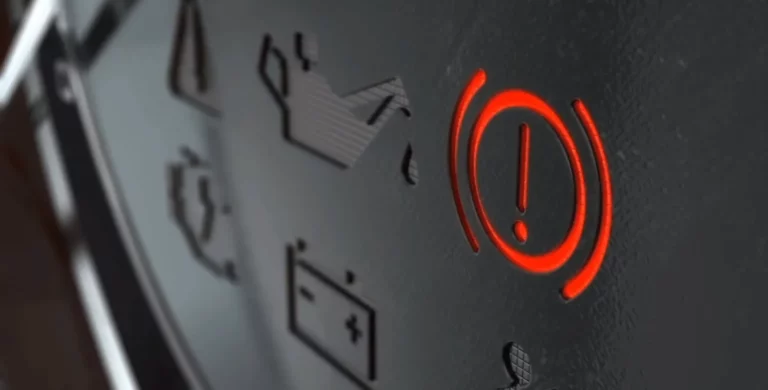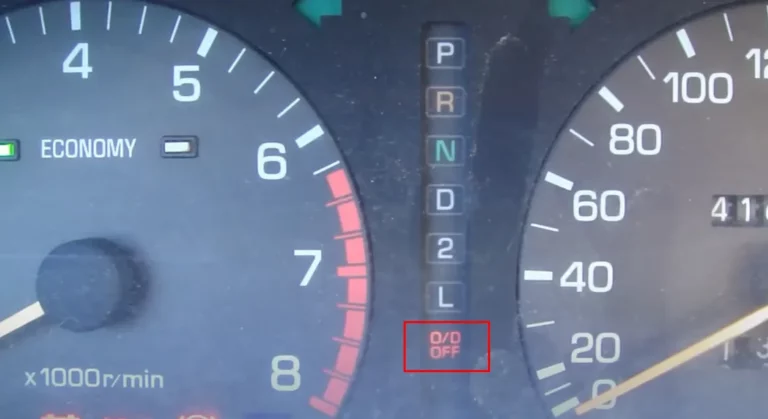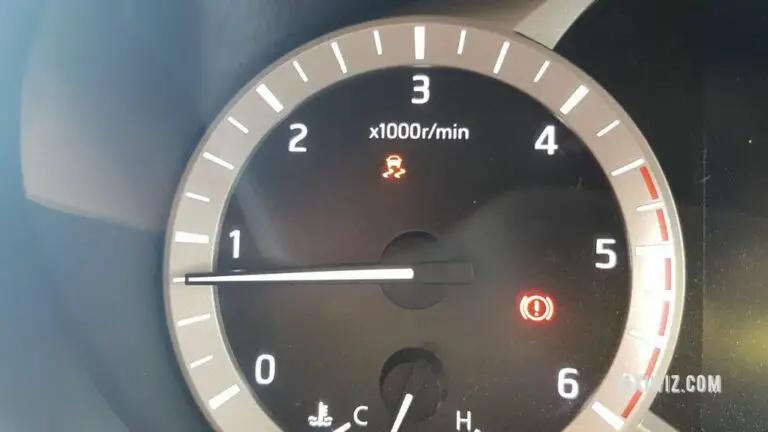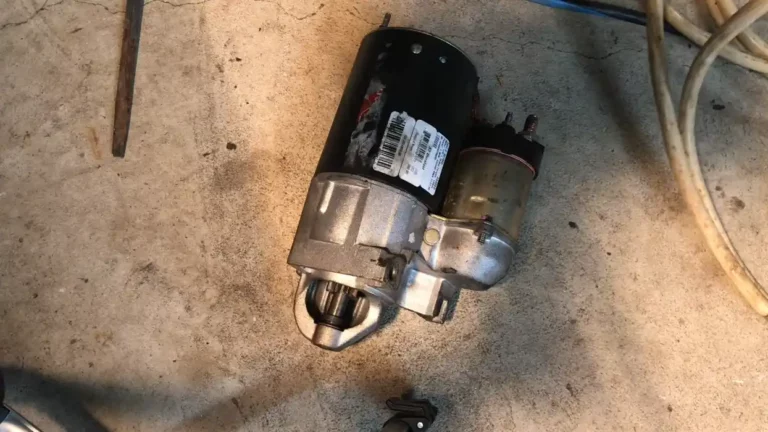Bad Crankshaft Position Sensor Symptoms – All You Need to Know
The crankshaft position sensor is a significant part of a vehicle’s engine management system. It provides the ECU with information regarding the rotational position & speed of the crankshaft.
There are several bad crankshaft position sensor symptoms out there, but they primarily revolve around the following:
- Engine related issues
- System Malfunctions
- Problems with fuel economy
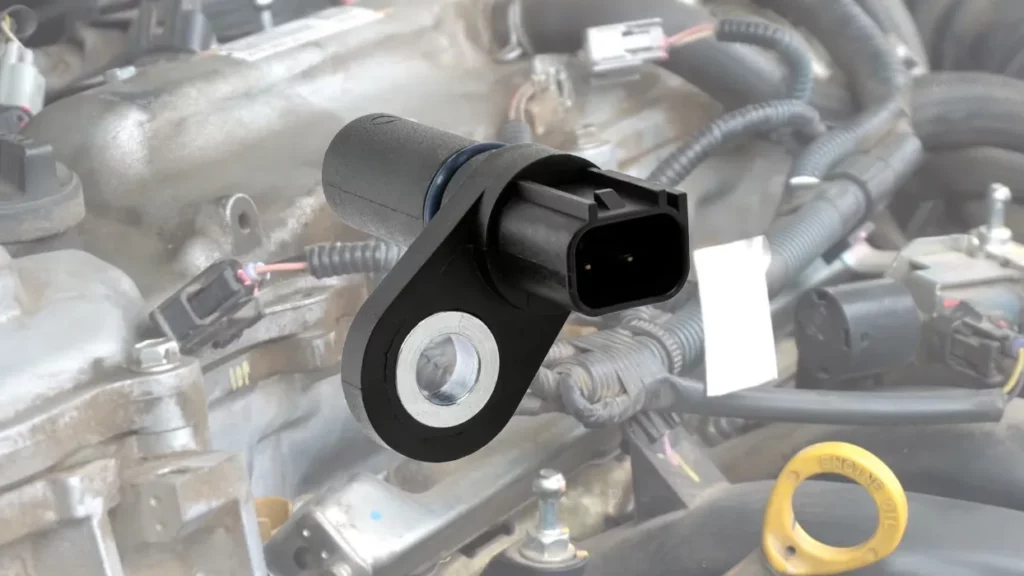
Signs of Bad Crankshaft Position Sensor
Let’s learn about the symptoms quickly.
Problem to Start
One of the first signs of a bad crankshaft position sensor is having difficulty starting the engine.
As the sensors calculate the crankshaft position and its speed, the ECU won’t be getting the proper data which will allow the car to have problems starting.
When this happens, you can already guess that there is some sort of issue with the engine components. And most of the time, it is a faulty crankshaft position sensor.
Engine Stalling
Engine stalling occurs when the sensors have trouble sending signals or if there is a complete loss of signal.
During this period, the engine will stall for a period before coming alive. As a result, the engine won’t have proper fuel delivery or ignition timing.
Erratic or Rough Engine Operation
Without getting the proper crankshaft position and speed data, the engine will have difficulty starting and will decide to force start.
This means it will start without the proper calculation conducted by the ECU. When that happens, the right timing of fuel injection or spark ignition won’t be maintained, resulting in an erratic or rough start for your engine and vehicle.
CEL or Check Engine Light Illumination
Another common sign of crankshaft position sensor malfunction is getting the Check Engine Light Illuminated on the vehicle dashboard.
When the ECU isn’t able to receive proper signals and information from the crankshaft position sensors, it will trigger the CEL on the dashboard.
This shows that there is some sort of problem with the engine and its components, and the driver should take a look into the issue as soon as possible.
Issues with Gear Shifting
This symptom is only monitored among vehicles that come with manual transmission.
The problem with shifting the gears come due to the fact that the ECU isn’t able to determine the optimal timing for clutch engagement for gear changes as it lacks the relevant data to do so.
Engine Misfires
A bad crankshaft position sensor can result in engine misfires too.
Engine misfire occurs when the air and fuel mix cylinders (one or multiple of them) fail to ignite properly.
When the sensors are not working properly, it will lead to spark plug failure, and that will eventually lead to engine misfire.
You should be able to confirm an engine misfire when you see a noticeable loss of power or hear irregular sounds and vibrations coming from the engine.
Intermittent Loss of Power
If the position sensors fail to send data to the ECU, then the ECU will consider this as an inconsistent signal, which will result in a momentary loss of engine power while you are driving your car.
This is due to the fact that the ECU won’t be able to determine the optimal clutch timing along with other engine functions, leading it to stall the engine.
In extreme cases, the engine will completely shut down, and you may be left stranded on the road.
Stumbling During Acceleration
As the ECU isn’t able to calculate accurate timing for the fuel injection. You may witness the car stumbling as you accelerate momentarily.
This is a common sign that there is something wrong with the crankshaft and its sensors. You also experience a delay in power delivery when you press the pedals.
Poor Fuel Economy
Due to a bad crankshaft position sensor, optimal fuel injection won’t be possible.
So, your engine will waste more fuel than its required amount, leading to poor fuel economy.
If this is the case, you will need to refuel more often than you used to.
Therefore, keep an eye on the fuel consumption rate of your car and see if it has spiked significantly in the past few days.
Engine Backfiring
The crankshaft sensor has a big role in the synchronization of the ignition timing with the rotation of the crankshaft.
So, when the sensor starts to provide irregular and incorrect signals, this will start to disrupt the ignition timing, causing unburned fuel to ignite in the exhaust system.
If that is the case, then there will be engine backfires, which will be accompanied by popping or banging noises from the exhaust.
Sudden Engine Shutdowns
Due to not receiving the proper signals from the sensors, the ECU may decide to suddenly shut down the engine while you are driving the vehicle.
When this happens, you may also face troubles just to restart the vehicle.
Difficult to Start in Wet & Humid Conditions
If the sensors aren’t working in wet and humid conditions, it is the moisture that is preventing them from working. And if the sensors can’t handle that.
Then you can be assured that they will start to fail in other tasks soon.
Increased Emissions & Black Smokes
Compromised combustions are also a sign of bad fuel injection, which can mean that there is something wrong with the crankshaft sensors.
This can result in increased emissions of harmful pollutants like carbon monoxide, nitrogen oxides, and hydrocarbons (HC).
If you notice black smoke from the exhaust or fail an emissions test, it could be due to a faulty crankshaft position sensor.
Illumination of Other Warning Lights
The Check Engine Light isn’t the only sign that may illuminate when there is a faulty crankshaft position sensor. Other sensors like the traction sensor and stability control sensor can also illuminate.
Complete Engine Failure
This is an extreme case situation, but if the sensor has stopped functioning altogether and isn’t providing any sort of data or signals to the ECU, then the engine won’t start.
You can notice this when you turn the ignition key, and there is no response from the engine.
Overall Decrease in Performance
If the sensor fails, then there will be a lot of timing issues from the ECU, and this will lead to a drastic decrease in the performance of your vehicle.
Why do Crankshaft Position Sensors fail?
There can be several reasons behind the crankshaft position sensor failure:
Damage to the Sensor
Most of the time, this is the primary reason for sensor failure. Multiple factors can lead to a damaged sensor.
Over time, the crankshaft position sensor can wear out, become damaged, or fail due to internal component degradation or due to extreme weather conditions.
Wiring or Connector Issues
Damaged or faulty wiring connections and connectors can disrupt the electrical signal between the crankshaft position sensor and the ECU.
Dirt Contamination
The crankshaft position sensor can be affected by dirt contamination like oil, dust, or debris from the engine.
They can interfere with the sensor’s operation & accuracy, which will lead it to provide incorrect readings.
Air Gaps
The crankshaft position sensor follows the primary principle of a magnetic field.
This means if there is an incorrect air gap between the sensor and the crankshaft wheel, then the sensor won’t be able to provide proper data.
Timing belt or chain problems
While this isn’t that common, in some cases, problems with the timing belt or chain can lead to malfunction of the crankshaft position sensor.
A loose or misaligned timing belt or chain can cause the crankshaft to rotate irregularly, giving inaccurate readings to the sensor.
Electrical system issues
Electrical issues like faulty voltage supply, grounding problems, or issues with other components can affect the crankshaft position sensor and disrupt the sensor’s ability to provide accurate readings.
What to Do When You See the Symptoms?
Damaged crankshaft position sensors will eventually lead to permanent damage to the engine.
So, to avoid this scenario, you should take action as soon as you witness the first signs.
Repairing faulty sensors don’t really work out in the long run. Therefore, we recommend that you replace the faulty sensors with new sensors.
You can do the replacement all by yourself. Still, unless you have previous experience with the engine components, it is better to seek the help of a professional mechanic on this part.
Related Post: What to Do After Replacing Crankshaft Sensor
Frequently Asked Questions [FAQs]
Can a faulty crankshaft position sensor cause the vehicle to lose power while driving at high speeds?
Yes, a faulty crankshaft position sensor can make the engine to lose power even at high speeds. It can disrupt the timing and fuel delivery which can lead to a loss of power.
Will a bad crankshaft position sensor cause the vehicle’s RPM to fluctuate or become unstable?
Yes, a malfunctioning crankshaft position sensor can make the engine’s RPM to fluctuate or become unstable.
Is it possible for a bad crankshaft position sensor to cause engine overheating?
Generally, no. But while a bad crankshaft position sensor itself does not directly cause engine overheating, it can indirectly contribute to it.
Can a faulty crankshaft position sensor cause the vehicle’s speedometer to malfunction?
No, a faulty crankshaft position sensor does not directly impact the speedometer’s function.
How long can a vehicle be driven with a bad crankshaft position sensor before it causes severe damage?
There is no specific timeframe as it depends on various factors, including the severity of the sensor’s failure and the vehicle’s overall condition.
Final Thoughts
If you’ve observed bad crankshaft position sensor symptoms in your vehicle, then you should act immediately.
Driving while the sensors aren’t functioning can only lead to further damage to your vehicle components and increase the risks of an accident.
Related Post: Will Disconnecting Battery Reset Crankshaft Sensor?

